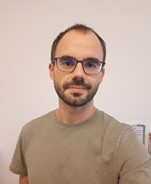Need Help?
20 January 2023
Interview with Dr. David Caballero—Author of a Published Paper in Bioengineering
|
|
Name: Dr. David Caballero Email: [email protected] Article title: “Versatile Vessel-on-a-Chip Platform for Studying Key Features of Blood Vascular Tumors” |
We had the pleasure of speaking with Dr. David Caballero, author of the recently published paper “Versatile Vessel-on-a-Chip Platform for Studying Key Features of Blood Vascular Tumors” in Bioengineering (ISSN: 2306-5354). We discussed the recent research trends in the field and his personal career developments.
We hope you enjoy the interview.
1. Congratulations on your published paper. Can you provide a background about yourself and what your research areas are?
I am an experienced biophysicist with an M.Sc. and Ph.D. in nanoscience from the University of Barcelona, Spain. Currently, I am an assistant researcher at the 3B´s Research Group at the University of Minho, Portugal, a world-known institute in the field of tissue engineering. Since very early on, particularly during my postdoctoral periods at ISIS/IGBMC—Université de Strasbourg (France) and at IBEC (Spain)—and now at 3B´s, I have been very passionate about applying the concepts and principles of fundamental physics to biological problems. My experiments are typically very multidisciplinary and combine microfabrication, tissue engineering, cell biology, and biophysics. The aim is to engineer realistic in vitro environments from which we can extract useful data that can be used to improve our understanding of the mechanisms involved in the onset and progression of pathologies. For example, one of my current research interests is recreating the dynamic properties of the native habitat of cells using organ-on-a-chip technology to evaluate how mechanical forces contribute to the pathophysiology of cancer. Indeed, this research field has attracted much attention from biomedical researchers and a lot of effort is currently being invested in the mechanobiology of cancer. In my case, I am interested in understanding how cancer cells migrate through confined spaces, such as vascular walls or dense matrices, and how they respond to external forces, particularly fluid flow, boosting their invasion capability. We hope that our discoveries can improve our current knowledge in the pathophysiology of the disease and eventually contribute to developing better therapies. Altogether, the combination of (bio)physics and nanotechnology in the biological field is an exciting field of research in which we will continue to see exciting results in the coming years.
2. What made you decide to publish an article in Bioengineering?
One of the most important decisions before and after writing an article is where to submit it. Indeed, there are a bunch of excellent multi-disciplinary journals in which my research could be published. A distinctive feature of Bioengineering though is the strong offer in Special Issues. After receiving the invitation from the editor, we realized that our work perfectly fit within the proposed topic and, therefore, the publication of our article would receive higher attention boosting the impact and interest in our work. After evaluation of the pros and cons of different journals, we decided to submit our article to Bioengineering. We cannot forget the big progression of Bioengineering during the last years, making this journal a very good option for publishing work in the field of tissue engineering, regenerative medicine, biophysics, or similar fields.
3. How was your experience publishing with Bioengineering?
I was indeed surprised, not only about the speed of the peer-reviewing process, but also about its quality. Typically, the time between the submission and publication of an article is very long, being in some cases several months. Sometimes this timeframe is too long, which may jeopardize the novelty of the work or a grant application, or both. Despite the speed of the peer-reviewing, I had two tough rounds of revisions. This contributed to improving the quality of the manuscript and, as a result, increased the interest in the article by the scientific community.
4. Was it important to you that the journal is Open Access?
Nowadays, publishing in Open Access is mandatory for most national and European funding schemes. However, most of the journals have very expensive APCs, which many research groups cannot afford. There is the possibility of publishing in “green” Open Access, but, in certain cases, this option dilutes the spirit of granting easy access to the articles. Publishing in “gold” Open Access at a moderate cost allows the scientific community to have full access to the published manuscripts directly on the journal website without the need to navigate inside University repositories. Overall, this has definitely contributed to our paper reaching a larger audience.
5. What do you hope that readers will get from your paper?
After reading the paper, it will be understood better how the structural and hydrodynamic complexity of vascular tumors can be reproduced and analyzed through microfluidics technology and biophysical analysis. This type of tumor displays aberrant – tortuous – vessel architectures and highly perturbed blood flows and, therefore, in vitro organ-on-a-chip platforms capable of recapitulating these distinctive features are highly demanded by the biomedical community. The readers will realize how vascular tumors perturb blood hemodynamics, particularly through the massive formation of thrombus and blood hemorrhage, two of the main events that we reproduce within the chip. Overall, our work establishes the technological basis of a versatile microfluidic platform, that we denote tumor vessel-on-a-chip, capable of reproducing the distinctive structural and dynamic traits occurring in vascular tumors. Note finally that our system may be utilized for investigating other dynamic events characteristic of vascular-related diseases or for the screening of novel pharmacological formulations targeting thrombi formation and blood hemorrhage, among other applications.


